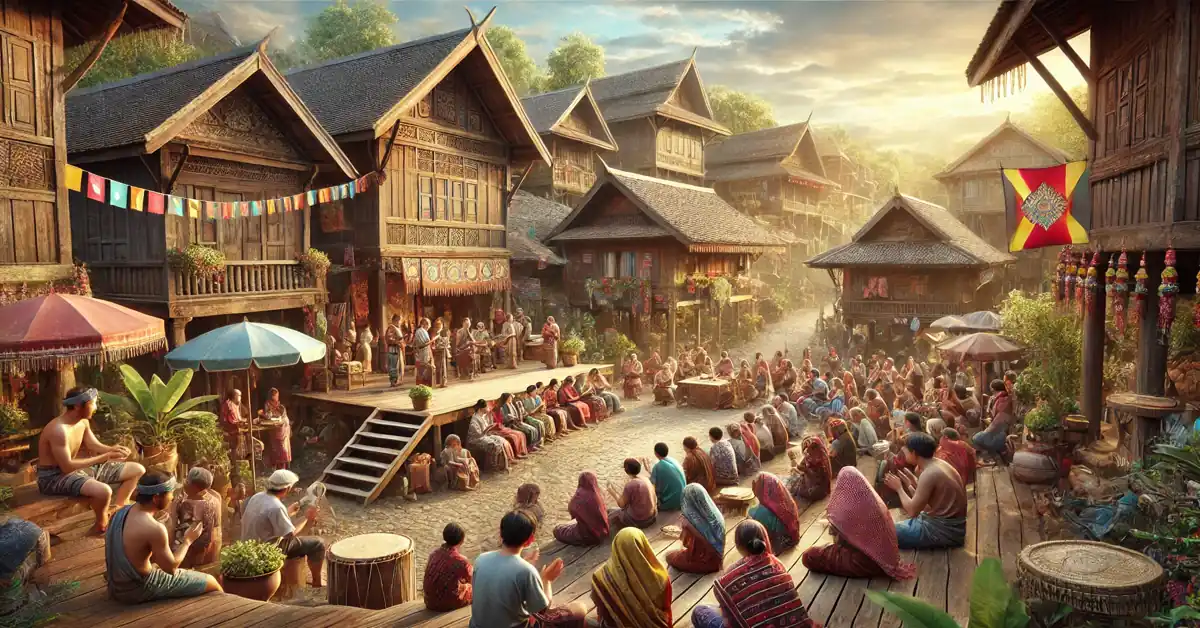The term “Ciulioneros” embodies much more than just a name; it signifies a community deeply rooted in its traditions, values, and a rich historical narrative. This group has withstood the trials of time, adapting to changes while fiercely guarding their identity against external pressures such as colonization and modernization. The story of the Ciulioneros is a tale of perseverance, cultural pride, and the tireless effort to keep their heritage alive. Through this article, we will delve into the history of the Ciulioneros, their cultural practices, the challenges they have faced over the centuries, and the way they continue to preserve their legacy for future generations.
Who Are the Ciulioneros?
The Ciulioneros are a distinct cultural group known for their unwavering commitment to preserving their unique identity. Originating from regions where traditional customs have been passed down from generation to generation, the Ciulioneros have maintained a connection to their roots, even as they faced challenges from outside influences. Their culture is characterized by rich traditions, language, music, art, and a strong sense of community.
Throughout history, the Ciulioneros have had to navigate the complexities of adapting to new societal structures while keeping their cultural essence intact. This has involved preserving traditional practices that define their way of life and maintaining a strong sense of identity in the face of globalization and modernity.
The Origins of the Ciulioneros
The origins of the Ciulioneros trace back to ancient times when they first settled in regions that were rich in natural resources and provided a suitable environment for agriculture, hunting, and fishing. These early Ciulioneros communities developed close-knit societies, where family values and tribal bonds played a central role in shaping their way of life. This connection to the land and nature became a cornerstone of Ciulioneros’ cultural beliefs, guiding their rituals and festivals that celebrated the changing seasons and harvest cycles.
The history of the Ciulioneros is deeply intertwined with migrations and societal changes that have shaped their journey. Through various historical events, the Ciulioneros have shown a remarkable ability to adapt while holding on to the elements that define their unique identity. Over time, their language and customs have become symbolic of their community’s resilience, allowing them to maintain a distinct cultural presence even as they adapted to new challenges.
The Impact of Colonization on the Ciulioneros
The Ciulioneros faced one of their most significant challenges during the era of colonization. As colonial powers expanded their territories, they often imposed new belief systems, languages, and societal norms on indigenous populations. Like many other traditional communities around the world, the Ciulioneros were subjected to attempts at cultural assimilation. These efforts aimed to replace their traditional practices with those of the colonizers, which threatened to undermine the cultural heritage that had been preserved for generations.
However, the Ciulioneros demonstrated a remarkable capacity for resilience. Rather than allowing their identity to be erased, they found ways to integrate elements of the new cultures they encountered while keeping their core traditions intact. This adaptation process allowed the Ciulioneros to maintain their cultural roots while navigating the changing political and social landscapes brought about by colonization.
The Cultural Practices of the Ciulioneros
The cultural practices of the Ciulioneros are a living testament to their rich heritage and spiritual beliefs. These practices encompass a wide range of rituals, festivals, and community gatherings that are integral to their way of life. Some of the key aspects of Ciulioneros culture include:
1. Traditional Ceremonies and Rituals
Ciulioneros ceremonies are often tied to the natural world and the cycles of the seasons. They celebrate important events such as the harvest, solstices, and equinoxes, which are considered sacred times for renewal and gratitude. These ceremonies are accompanied by traditional music, dance, and oral storytelling, which help to keep the myths and legends of the Ciulioneros alive.
The rituals performed by the Ciulio neros often involve offerings to ancestral spirits and nature deities, reflecting their deep respect for the earth and all its creatures. These practices underscore the Ciulio neros’ belief in the interconnectedness of humans and nature, a philosophy that has guided their way of life for centuries.
2. Language as a Cultural Pillar
The Ciulioneros language is a crucial element of their cultural identity. It serves as a vehicle for passing down stories, wisdom, and values from one generation to the next. For the Ciulio neros, their language is more than just a means of communication; it is a living embodiment of their history and worldview.
Despite facing pressures from colonization and modernization to adopt new languages, the Ciulio neros have worked tirelessly to preserve their linguistic heritage. Language revitalization efforts have been instrumental in ensuring that the younger generation continues to speak and understand the traditional tongue, thus maintaining a connection to their cultural roots.
3. Music and Dance of the Ciulioneros
Music and dance play a central role in the Ciulio neros’ cultural expression. Their traditional music incorporates a variety of instruments, such as drums, flutes, and stringed instruments, which are used to create rhythms that accompany dances performed during festivals and community gatherings.
The dances of the Ciulio neros are often symbolic of stories from their myths and legends, depicting the struggles and triumphs of their ancestors. Each dance has its own unique meaning, whether it is a celebration of life, a memorial for the departed, or a ritual to bring good fortune. The vibrant costumes worn during these performances add to the visual spectacle, showcasing the artistry and creativity of the Ciulioneros.
Modern-Day Challenges and Adaptation
In the 21st century, the Ciulioneros face new challenges as they navigate the pressures of globalization, urbanization, and technological advancement. The rise of digital media and the internet has introduced new ways of communication and cultural exchange, which can sometimes overshadow traditional practices. Additionally, many younger Ciulio neros are moving to urban centers in search of education and employment opportunities, which can create a disconnect from their cultural roots.
Despite these challenges, the Ciulio neros have continued to find ways to adapt and evolve. Cultural preservation initiatives led by community leaders and elders focus on teaching traditional skills and rituals to the younger generation. These efforts are aimed at ensuring that the Ciulio neros’ heritage remains alive and relevant in the modern world.
Digital platforms have also become a tool for cultural preservation. The Ciulio neros use social media and online forums to share stories, celebrate their traditions, and connect with members of their community around the globe. This blending of technology and tradition has allowed the Ciulio neros to maintain their cultural identity while adapting to the realities of the modern era.
The Role of Ciulioneros in Cultural Heritage Preservation
The Ciulioneros’ commitment to cultural preservation serves as an example of the importance of maintaining cultural diversity in a world that is rapidly becoming more homogenized. Their efforts highlight the value of traditional knowledge and practices, which can offer insights into sustainable living, community resilience, and spiritual well-being.
Cultural preservation is not just about saving traditions for the sake of the past; it is about celebrating the uniqueness of each community and ensuring that future generations have the opportunity to learn from their ancestors. The Ciulio neros understand this deeply, and their dedication to safeguarding their culture is a testament to the power of resilience.
The Future of the Ciulioneros: Hope and Challenges
Looking ahead, the future of the Ciulioneros will depend on their ability to balance tradition and modernity. They must continue to adapt to changing societal norms while preserving their core values. By embracing education, technology, and cultural exchange, the Ciulio neros can strengthen their community and ensure that their heritage remains vibrant and relevant in the years to come.
While the challenges are significant, the Ciulio neros’ history of perseverance offers hope that they will continue to thrive. As long as they remain dedicated to their cultural roots and open to positive change, the Ciulio neros will be able to pass on their legacy to future generations, ensuring that the rich tapestry of their history remains intact.
Conclusion: The Enduring Legacy of the Ciulioneros
The story of the Ciulioneros is one of resilience, pride, and cultural preservation. Despite the many challenges they have faced over the centuries, they have remained steadfast in their commitment to maintaining their unique identity. Through their traditional ceremonies, music, language, and values, the Ciulioneros continue to celebrate their heritage and share it with the world.
In a time when globalization threatens to erase cultural diversity, the Ciulio neros serve as a reminder of the importance of staying connected to one’s roots. Their story is an inspiration to all who value tradition, and it underscores the power of community in preserving the essence of what makes each culture unique.
FAQs About Ciulioneros
1. Who are the Ciulioneros?
The Ciulioneros are a cultural group known for their deep commitment to preserving their heritage, including traditional practices, music, language, and rituals. They have maintained their identity despite facing external challenges such as colonization and modernization.
2. What cultural practices do the Ciulioneros follow?
The Ciulioneros engage in a variety of cultural practices, including traditional ceremonies, dance, music, and oral storytelling. Their rituals often celebrate nature, ancestral spirits, and seasonal changes, reflecting their connection to the natural world.
3. How did colonization impact the Ciulioneros?
During colonization, the Ciulioneros faced attempts to assimilate their cultural practices into those of the colonial powers. Despite these efforts, they managed to preserve their traditions by adapting and blending new influences with their heritage.
4. What challenges do the Ciulioneros face today?
The Ciulioneros face challenges such as globalization, urbanization, and the influence of digital media, which can lead to a disconnection from their traditional roots. However, they have been adapting by using modern technology to preserve and share their cultural heritage.
5. How are the Ciulioneros preserving their language?
The Ciulioneros have made significant efforts in language revitalization, ensuring that their traditional language is taught to the younger generation. This includes community-led programs and the use of digital platforms to promote language learning.
6. Why is cultural preservation important for the Ciulioneros?
For the Ciulioneros, cultural preservation is essential for maintaining their identity and connection to their ancestors. It ensures that their rich history and unique practices are not lost to modern influences, allowing future generations to understand and celebrate their heritage.











